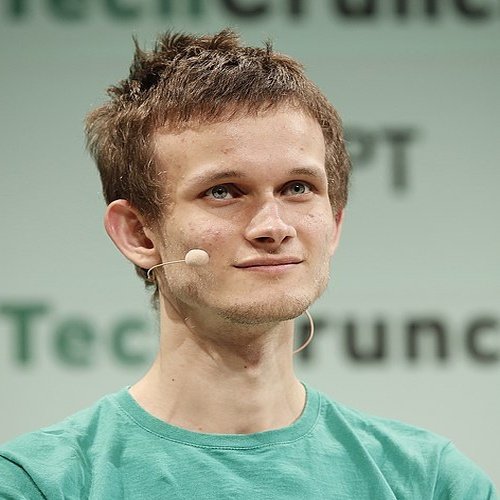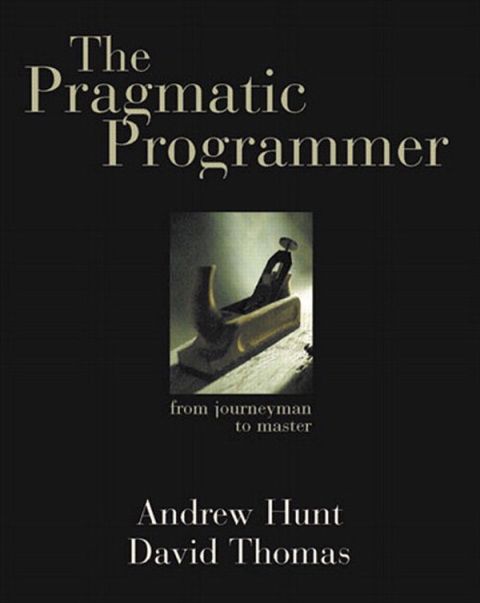Structure and Interpretation of Computer Programs, second edition Book Summary
Dive into the depths of computer science with 'Structure and Interpretation of Computer Programs,' a foundational text that uncovers the principles of programming through the lens of Lisp. Abelson and Sussman guide readers on an intellectual journey, revealing how abstract concepts underpin the art of program design. This edition expands upon classic paradigms, integrating real-world applications and modern techniques. Discover how the elegance of programming mirrors the beauty of mathematics and philosophy. Whether you're a seasoned coder or a curious novice, this book offers profound insights that challenge and inspire.
By Harold Abelson, Gerald Jay Sussman
Published: 1996
"The process of abstraction is not just about hiding details, but about understanding the fundamental structures that underlie complex systems."
Book Review of Structure and Interpretation of Computer Programs, second edition
Structure and Interpretation of Computer Programs has had a dramatic impact on computer science curricula over the past decade. This long-awaited revision contains changes throughout the text. There are new implementations of most of the major programming systems in the book, including the interpreters and compilers, and the authors have incorporated many small changes that reflect their experience teaching the course at MIT since the first edition was published. A new theme has been introduced that emphasizes the central role played by different approaches to dealing with time in computational models: objects with state, concurrent programming, functional programming and lazy evaluation, and nondeterministic programming. There are new example sections on higher-order procedures in graphics and on applications of stream processing in numerical programming, and many new exercises. In addition, all the programs have been reworked to run in any Scheme implementation that adheres to the IEEE standard.
Book Overview of Structure and Interpretation of Computer Programs, second edition
About the Book Authors
Harold Abelson
Harold Abelson is a renowned computer scientist and educator, recognized for his pivotal contributions to the field of computer science and programming education. He is a co-author of the influential textbook 'Structure and Interpretation of Computer Programs' (SICP), which has been instrumental in shaping the curriculum of computer science programs worldwide. Abelson is also a notable figure behind the MIT OpenCourseWare initiative, promoting free and open access to educational resources. His writing style is clear and pedagogical, focusing on making complex concepts accessible to learners. Abelson's work emphasizes the interplay between computer science and society, advocating for the ethical implications of technology.
Gerald Jay Sussman
Gerald Jay Sussman is a prominent American computer scientist, educator, and author known for his significant contributions to the field of computer science and artificial intelligence. He is a Professor of Electrical Engineering and Computer Science at the Massachusetts Institute of Technology (MIT). Sussman co-authored the influential textbook 'Structure and Interpretation of Computer Programs' with Harold Abelson, which has played a crucial role in computer science education since its publication in 1985. He is also known for his work on the programming language Scheme and as a key figure in the development of artificial intelligence. Sussman's writing style is characterized by its clarity and accessibility, reflecting his belief in the importance of understanding complex concepts through a foundational approach.
Book Details
Key information about the book.
- Authors
- Harold Abelson, Gerald Jay Sussman
- Published
- July 1996
- Publisher
- MIT Press
- ISBN
- 0262510871
- Language
- English
- Pages
- 685
- Genres
- Software DevelopmentArtificial IntelligenceTechnology
Purchase Options
Support local bookstores: BookShop gives a portion of each sale to independent bookshops!
Similar books you might like →
SPIN® -Selling Book Summary
Spin Selling dives into the transformative approach to sales that prioritizes understanding customer needs over traditional pitches. Author Neil Rackham introduces the SPIN acronym—Situation, Problem, Implication, Need-Payoff—guiding salespeople to ask the right questions that unlock deeper insights. With captivating case studies and practical strategies, the book reveals how to build genuine connections and deliver tailored solutions. This method not only enhances sales performance but also fosters trust and long-term relationships. Discover how mastering SPIN can revolutionize your approach to selling and elevate your success!
Clean Code Book Summary
Clean Code: A Handbook of Agile Software Craftsmanship by Robert C. Martin is a masterclass in writing quality code that stands the test of time. Through a series of practical examples and principles, Martin reveals the art of developing clean, readable, and maintainable code, while emphasizing the moral responsibility of programmers. He challenges readers to confront their coding habits and provides actionable insights to elevate their skills. With an exploration of key concepts like refactoring, testing, and the importance of simplicity, this book becomes an essential guide for anyone who writes software. Dive in and discover how clean code not only enhances productivity but also fosters a culture of excellence in software development!
The Pragmatic Programmer Book Summary
In "The Pragmatic Programmer," Andrew Hunt and David Thomas unveil the timeless principles and practices that empower developers to master their craft. Through captivating anecdotes and insightful tips, they challenge conventional programming wisdom, urging readers to embrace adaptability and continuous learning. The compelling emphasis on practical techniques, such as code craftsmanship and effective debugging, makes this a must-read for both seasoned pros and new coders. With its blend of philosophy and actionable advice, the book invites you to reflect on your own software development journey. Prepare to elevate your programming skills and become a more versatile developer—your future self will thank you!
Superintelligence Book Summary
In 'Superintelligence', Nick Bostrom explores the future of artificial intelligence and its potential to surpass human intelligence. He delves into the profound implications this could have for humanity's survival and progress. With a blend of philosophical inquiry and rigorous analysis, Bostrom warns of the unforeseen risks associated with creating superintelligent machines. His thought-provoking arguments challenge readers to consider the ethical responsibilities that come with technological advancement. Will we be the masters of our own creations or their unwitting victims?
Deep Learning Book Summary
Delve into the revolutionary world of artificial intelligence with 'Deep Learning' by Ian Goodfellow and his co-authors. This comprehensive guide unpacks the intricacies of neural networks and algorithms that are shaping our future. Each chapter unveils the secrets behind groundbreaking technologies, from image recognition to natural language processing. Readers will be fascinated by the marriage of theory and application, making complex concepts accessible. Whether you’re a novice or an expert, this book promises to expand your understanding and spark your curiosity about what lies ahead in the field.
How To Win Friends and Influence People Book Summary
In 'How To Win Friends and Influence People', Dale Carnegie unveils timeless principles of human interaction that can transform your social and professional life. Through compelling anecdotes and practical strategies, Carnegie demonstrates how understanding others' perspectives can lead to deeper connections and greater influence. The book is not just about manipulation, but about genuine empathy and building lasting relationships. Discover the art of persuasion and the secret to making people eager to cooperate with you. This classic guide will leave you inspired to change the way you communicate and connect with those around you.
Breaking Rockefeller Book Summary
In 'Breaking Rockefeller,' Peter B. Doran unveils the fierce struggle for control over the world’s oil industry in the early 20th century. This riveting narrative dives deep into the fierce rivalry between titans like John D. Rockefeller and the upstart competitors who sought to dismantle his empire. Through thrilling tales of ambition, betrayal, and unexpected alliances, Doran reveals the gritty realities behind the growth of the oil industry and its global implications. Will the challengers succeed in dismantling the monopolistic grip of the Rockefellers? This captivating account will leave readers questioning the true cost of power and the lengths to which individuals will go to secure their legacy.
Code Book Summary
In 'Code', Charles Petzold takes readers on a captivating journey through the world of programming and computer science. He unravels the complex tapestry of how computers work, starting from simple concepts and building up to intricate systems. Through engaging anecdotes and metaphors, Petzold demystifies the inner workings of machines, making them accessible to everyone. This exploration not only reveals the beauty of code but also challenges us to think critically about the impact of technology in our lives. Prepare to see the digital world around you in a whole new light!
Showing 8 of 30 similar books
Similar Book Recommendations →

Vitalik Buterin's Book Recommendations
Vitalik Buterin is a Canadian-Russian programmer and writer, best known as the co-founder of Ethereum, a revolutionary blockchain platform that enables smart contracts and decentralized applications. Born in 1994, Buterin displayed exceptional talent in mathematics and computer science from a young age. He co-authored the white paper for Ethereum in 2013, which has since become a cornerstone of the cryptocurrency and blockchain space. In addition to his technical contributions, Buterin is a prolific writer, having penned numerous articles and papers on blockchain technology, cryptography, and decentralization. His work has earned him recognition as one of the most influential figures in the world of cryptocurrency.

Naval Ravikant's Book Recommendations
Naval Ravikant is an entrepreneur, angel investor, and philosopher, best known as the co-founder of AngelList, a platform that connects startups with investors. Ravikant is a prolific thinker and writer on topics such as startups, investing, and personal well-being, sharing his wisdom through essays, podcasts, and social media. He has invested in over 100 companies, including Uber, Twitter, and Yammer, making him one of Silicon Valley’s most successful angel investors. Ravikant is also known for his philosophical musings on wealth, happiness, and the meaning of life, which have garnered him a large and dedicated following.

Bret Victor's Book Recommendations
Bret Victor is a renowned American interface designer and computer scientist celebrated for his innovative contributions to interactive design and human-computer interaction. He is best known for creating dynamic, explorable explanations, which have significantly influenced the way educational content is presented and understood. Victor's seminal work, "Inventing on Principle," advocates for the integration of immediate feedback in creative processes, inspiring a new wave of interactive programming environments. As a former member of the Apple Human Interface team, he played a pivotal role in shaping modern user interfaces. Through his organization, Dynamicland, Victor continues to explore and expand the boundaries of immersive, collaborative computing environments.

Jason Silva's Book Recommendations
Jason Silva is a Venezuelan-American filmmaker, philosopher, and futurist, best known for hosting the Emmy-nominated series Brain Games on National Geographic. Silva is a passionate advocate for technology, creativity, and the exploration of human potential, often delivering thought-provoking talks on how innovation is reshaping the world. His series Shots of Awe, where he combines philosophical musings with stunning visuals, has gained a large following online. Silva frequently speaks about topics like futurism, artificial intelligence, and the intersection of science and art. His enthusiastic and visionary approach has made him a leading voice in discussions about the future of humanity.

Patrick Collison's Book Recommendations
Patrick Collison is an Irish entrepreneur and co-founder of Stripe, a global technology company that enables businesses to accept online payments. Along with his brother John, Patrick has transformed Stripe into one of the most valuable private tech companies in the world. Stripe’s innovative approach to online payments has made it a key player in the financial technology space. Collison is known for his deep interest in science, technology, and policy, often engaging in conversations about innovation, progress, and how to improve societal outcomes. He is an advocate for scientific advancement and the intersection of technology and public policy.

Anu Hariharan's Book Recommendations
Anu Hariharan is a distinguished partner at Y Combinator's Continuity Fund, where she has been instrumental in scaling numerous startups into successful enterprises. With a strong background in economics and technology, she has become a respected voice in the venture capital community. Hariharan has also made significant contributions through her writing on startup growth and investment strategies, offering insightful analyses and practical advice to entrepreneurs. Her work is frequently featured in leading business publications, showcasing her expertise in the tech industry. Beyond her professional accomplishments, Hariharan is committed to fostering diversity and inclusion within the startup ecosystem.

Barack Obama's Book Recommendations
Barack Obama is the 44th President of the United States, serving from 2009 to 2017. As the first African American president, Obama’s leadership marked a historic moment in American history. His administration focused on healthcare reform, economic recovery from the Great Recession, and environmental policies. He is best known for the Affordable Care Act, as well as his efforts to expand civil rights and restore diplomatic relations with Cuba. Since leaving office, Obama has continued to engage in public life through his foundation, focusing on leadership development, civic engagement, and global issues.

Reshma Saujani's Book Recommendations
Reshma Saujani is the founder of Girls Who Code, an organization aimed at closing the gender gap in technology by empowering young women to pursue careers in coding and computer science. She gained national attention in 2010 as the first Indian-American woman to run for U.S. Congress. Reshma is also the author of several books, including Brave, Not Perfect, which encourages women to embrace failure and take risks. Her TED Talk on teaching girls bravery rather than perfection has garnered millions of views. Reshma continues to advocate for gender equality and innovation in education.
Showing 8 of 16 related collections
“The process of abstraction is not just about hiding details, but about understanding the fundamental structures that underlie complex systems.”
Structure and Interpretation of Computer Programs, second edition
By Harold Abelson, Gerald Jay Sussman
Frequently Asked Questions
Explore Our Catalogue
Discover a world of knowledge through our extensive collection of book summaries.
Genres
Genres
Genres
Featured Collections
- Top Book Club Picks
- One-Stop Nutrition
- Summer Reads 2024
- Best Beach Reads 2024
- Work-Life Balance Guide
- Time Management
- Healthy Foods
- Entrepreneur Toolkit
- Mind & Body Wellness
- Future Tech Insights
- Leadership Essentials
- Financial Freedom
- Sci-Fi Masterpieces
- Parenting 101
- Books That Became Blockbusters
- Guide to a Healthy Pregnancy










